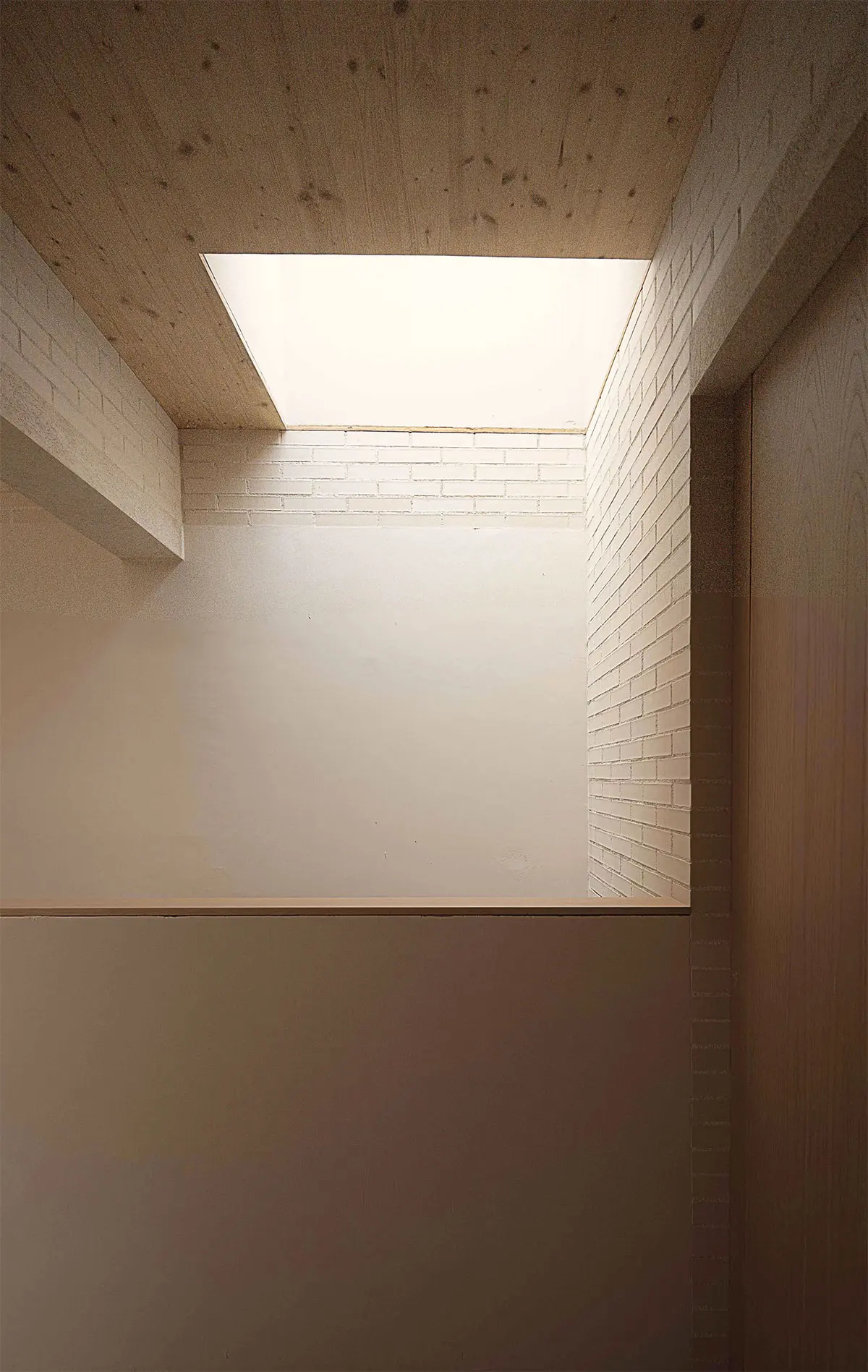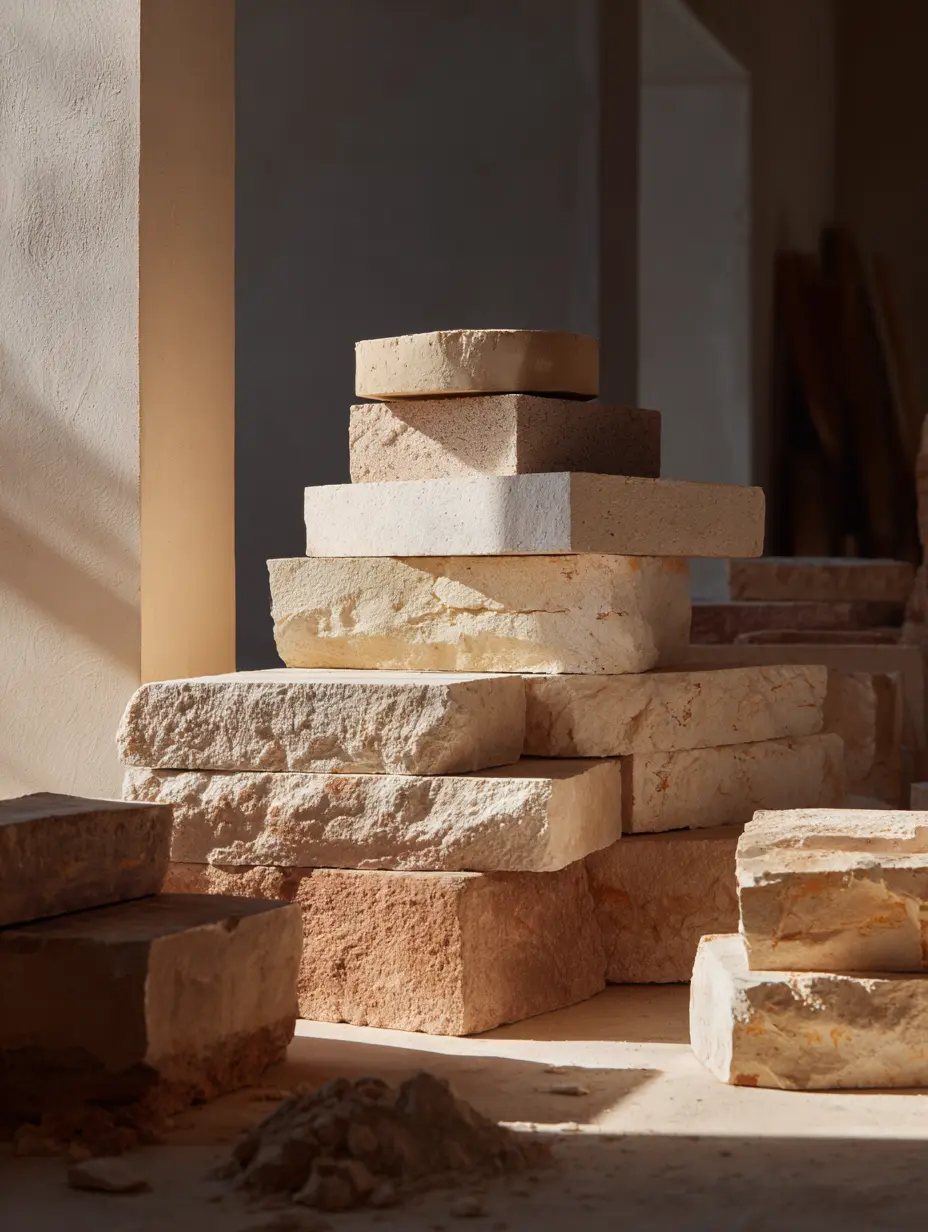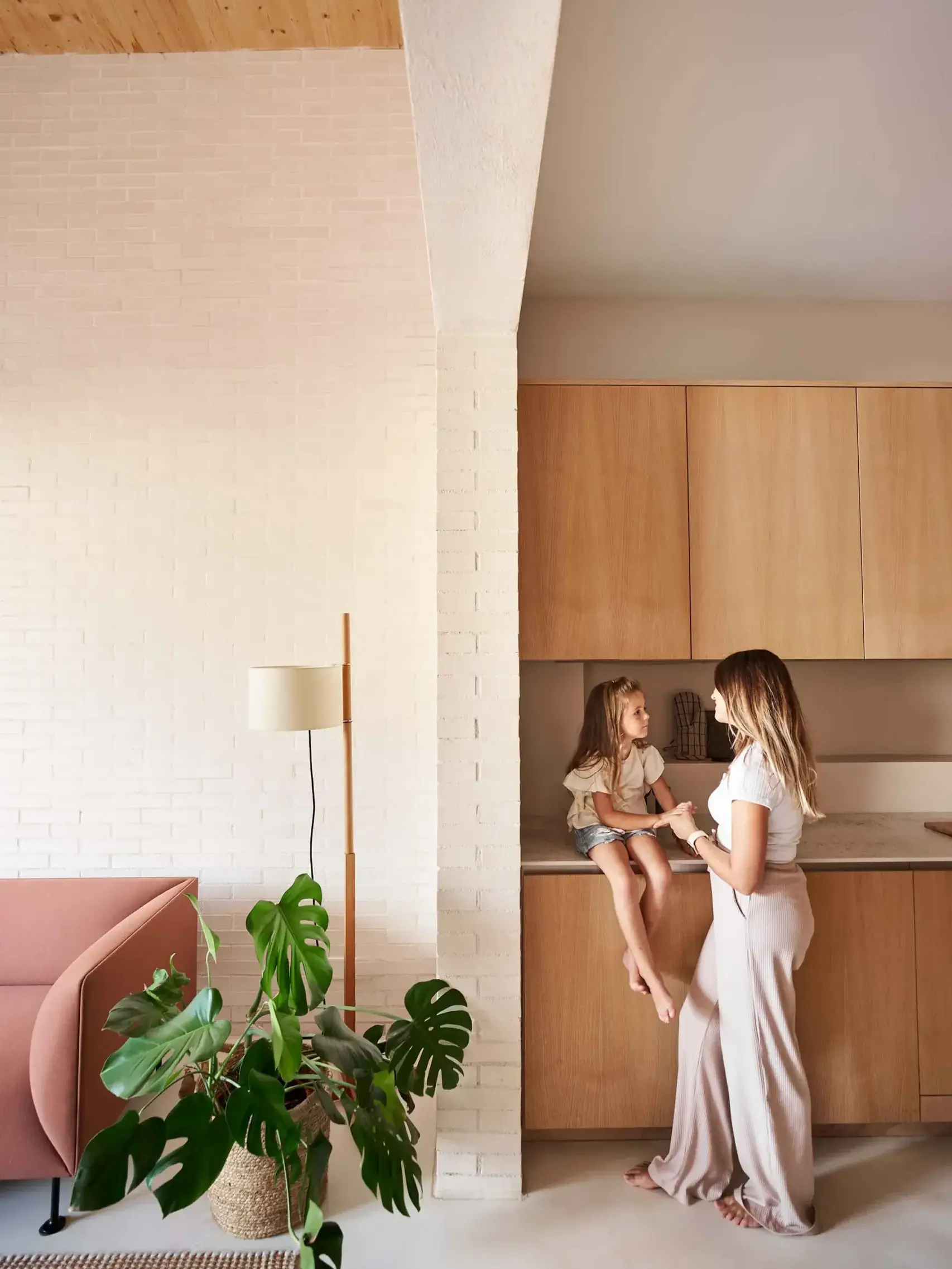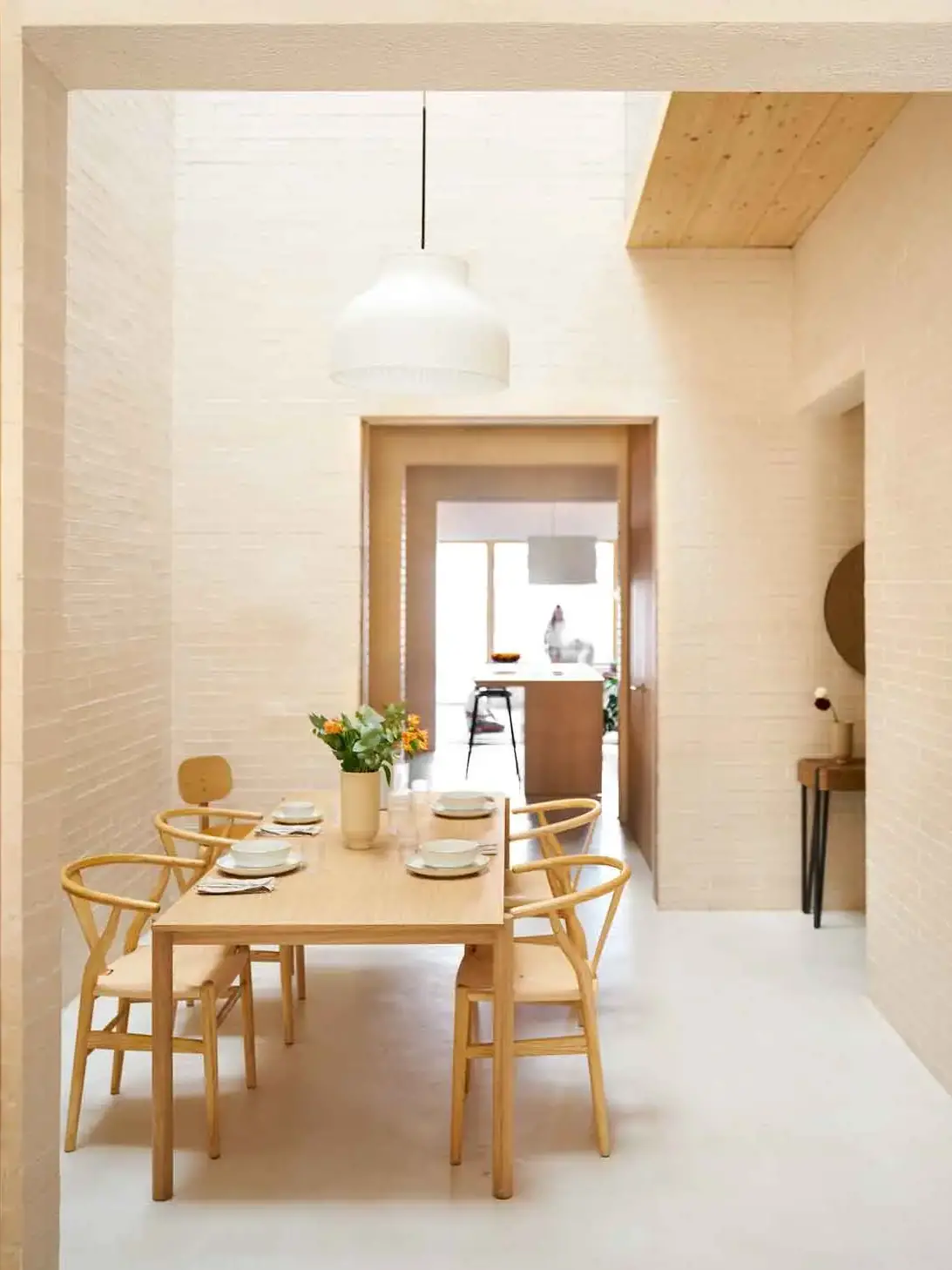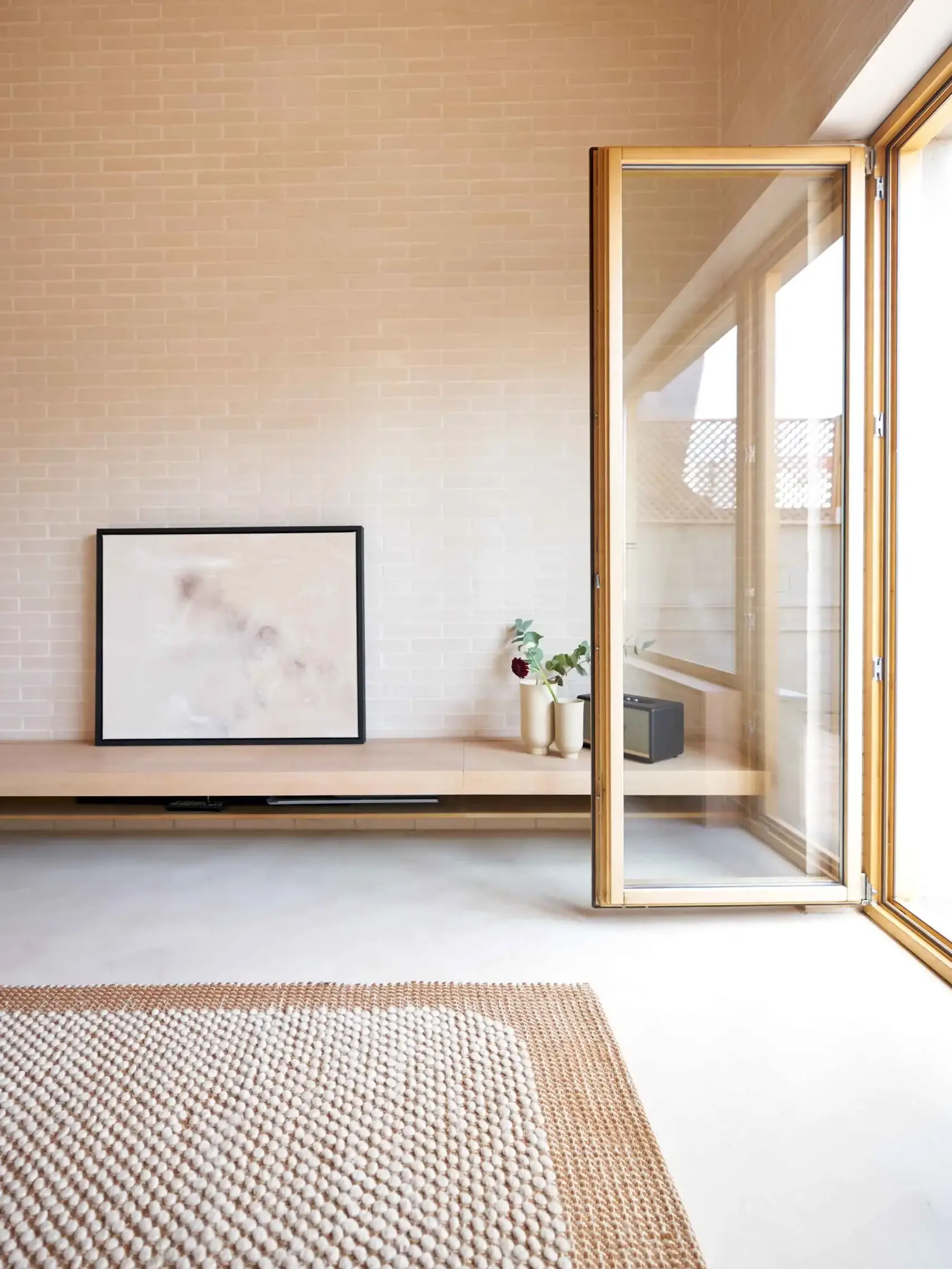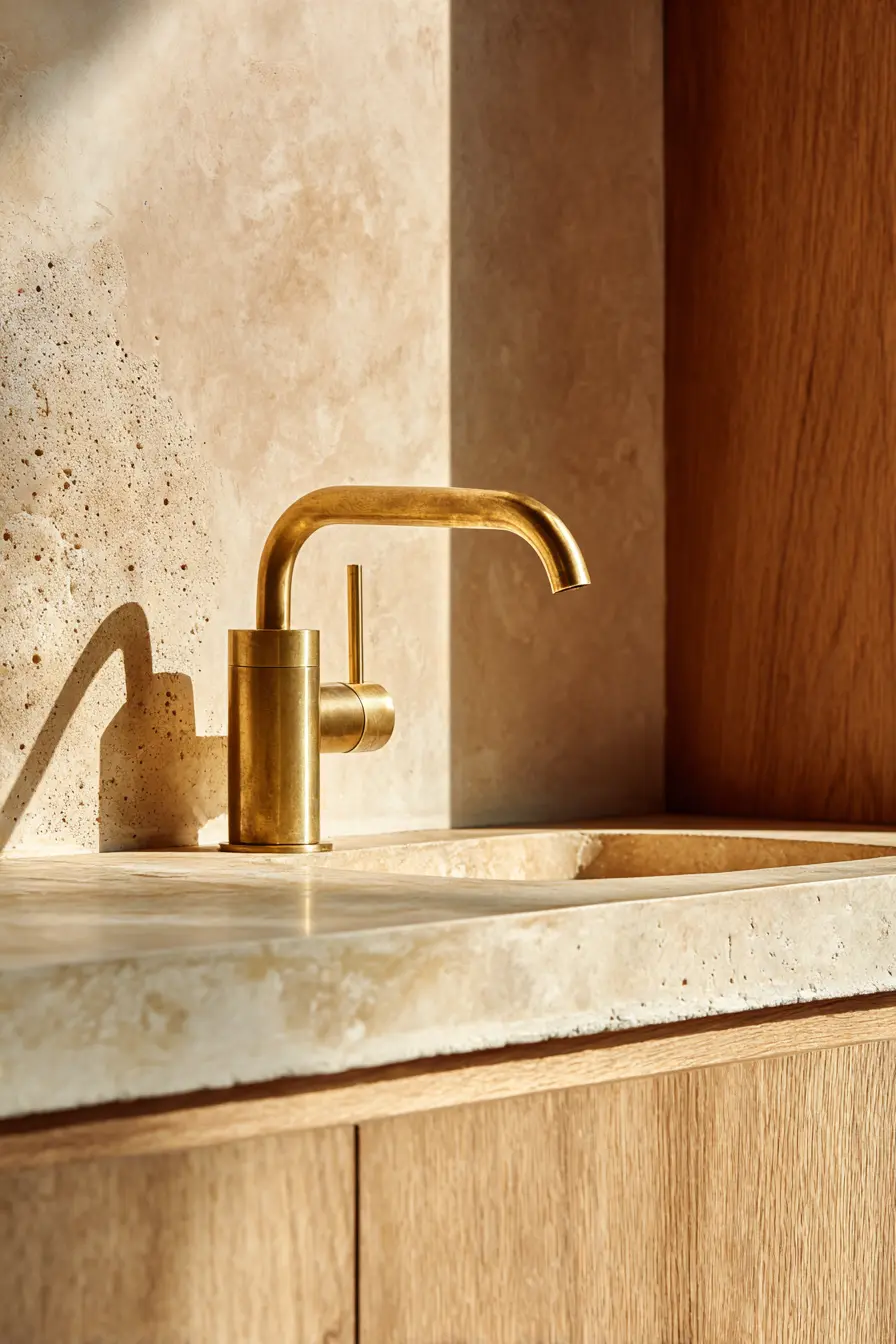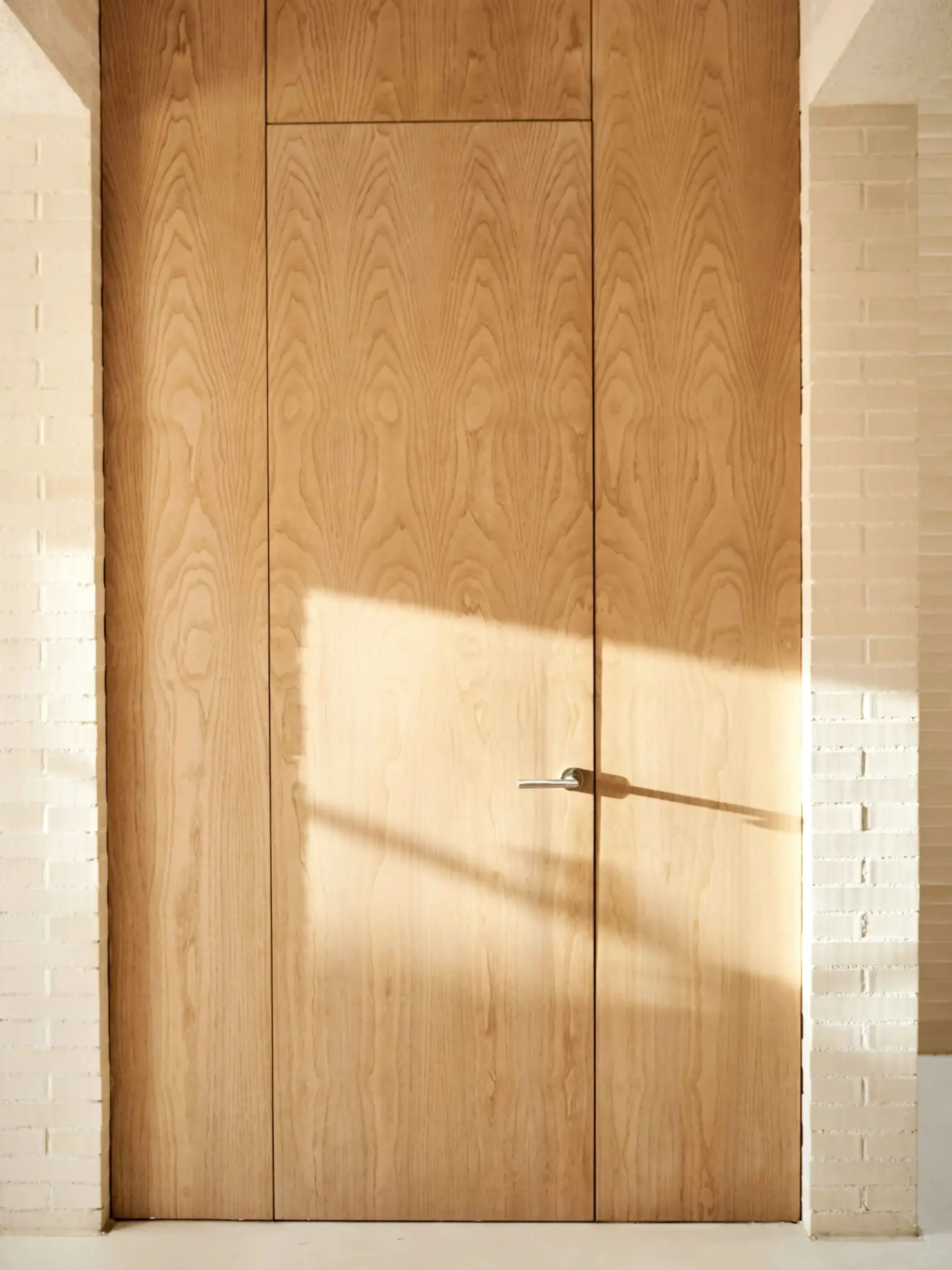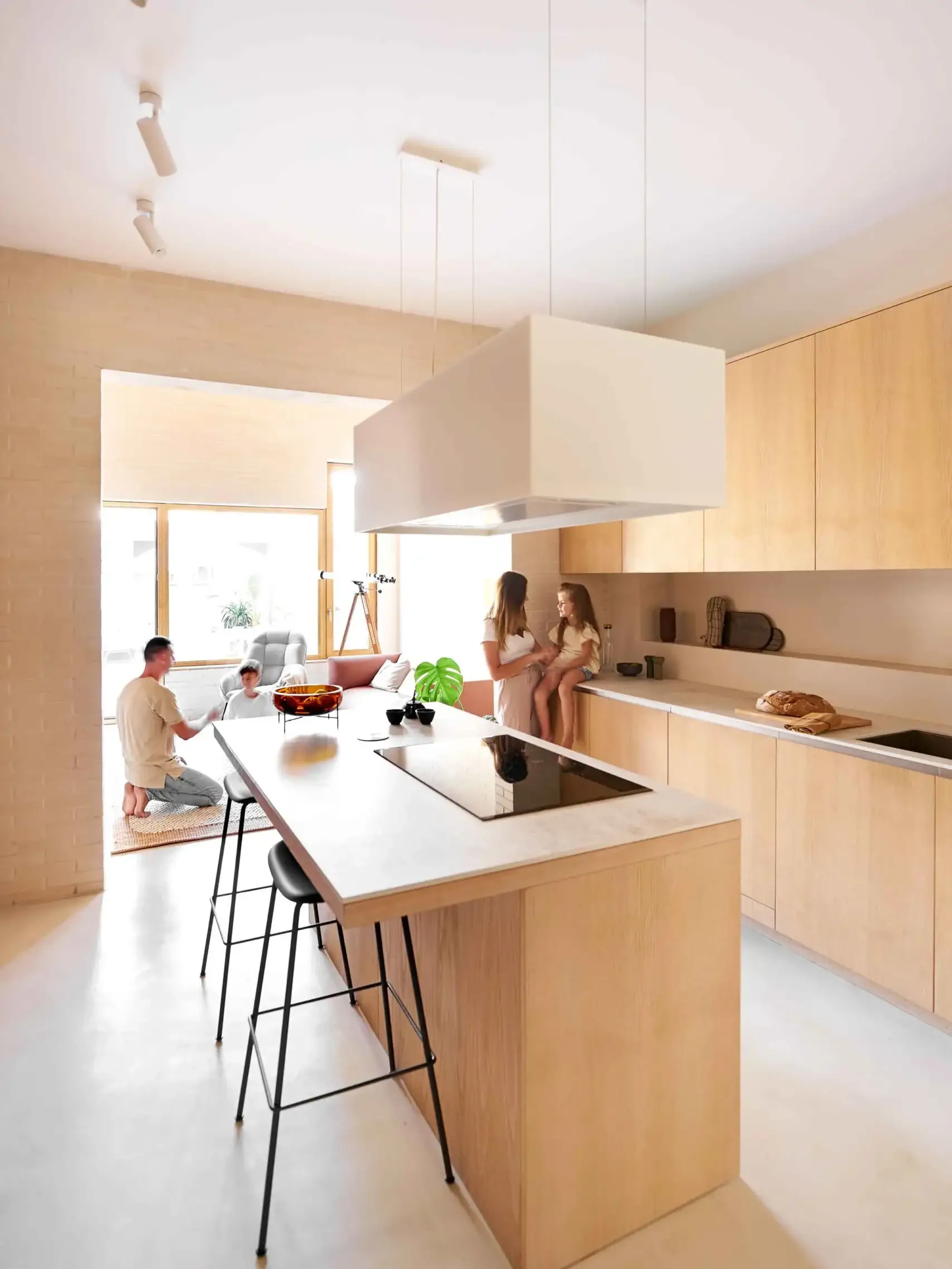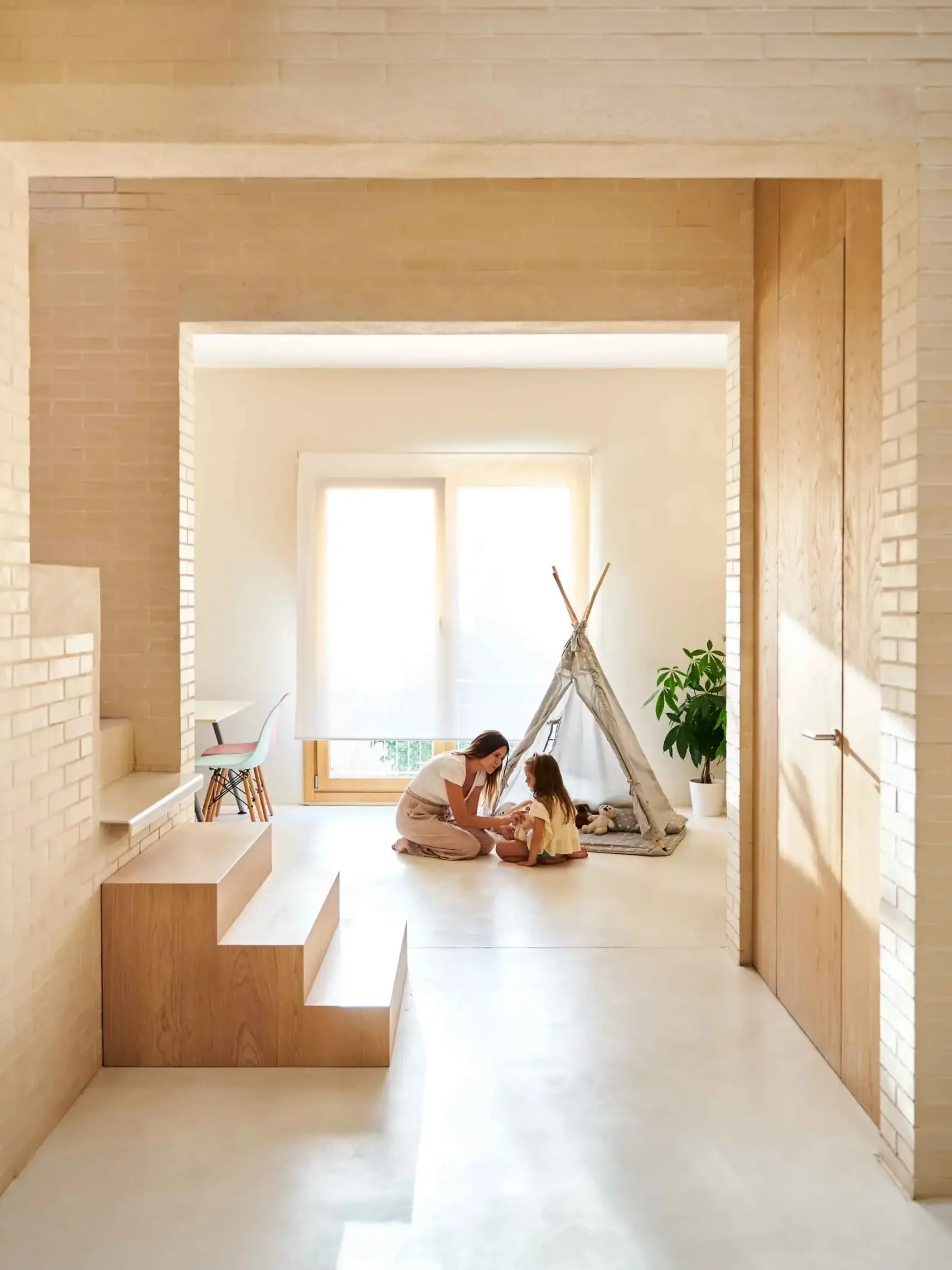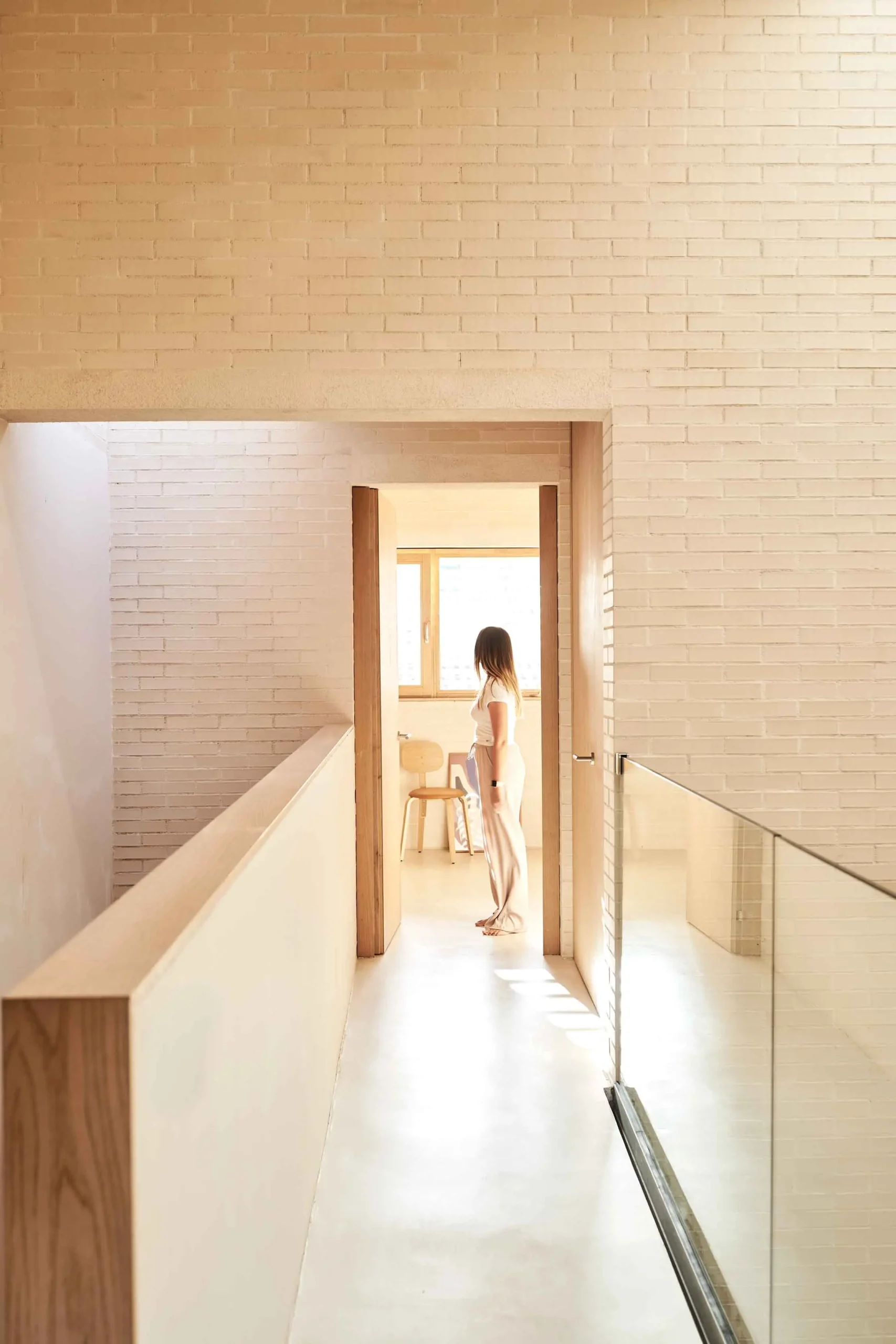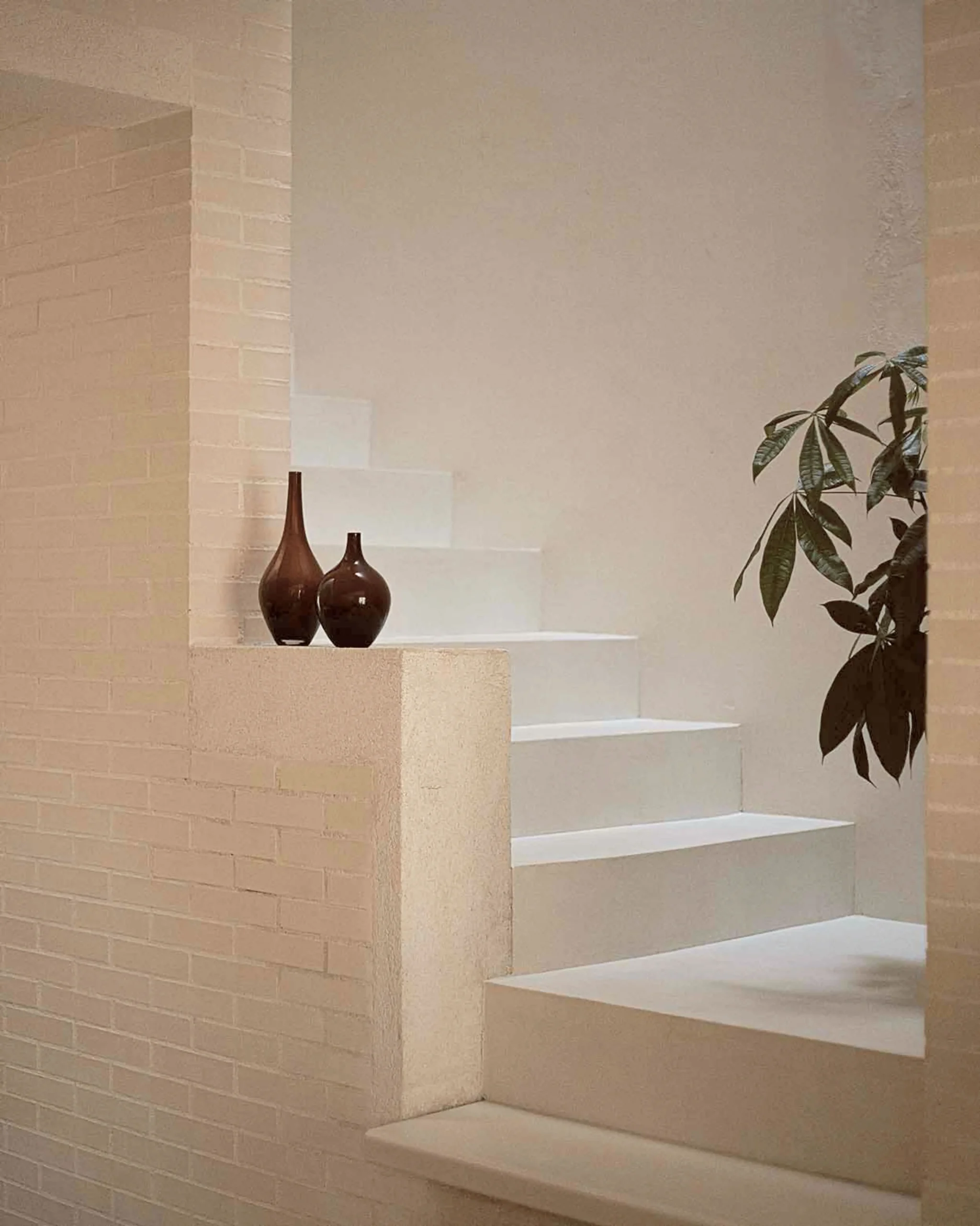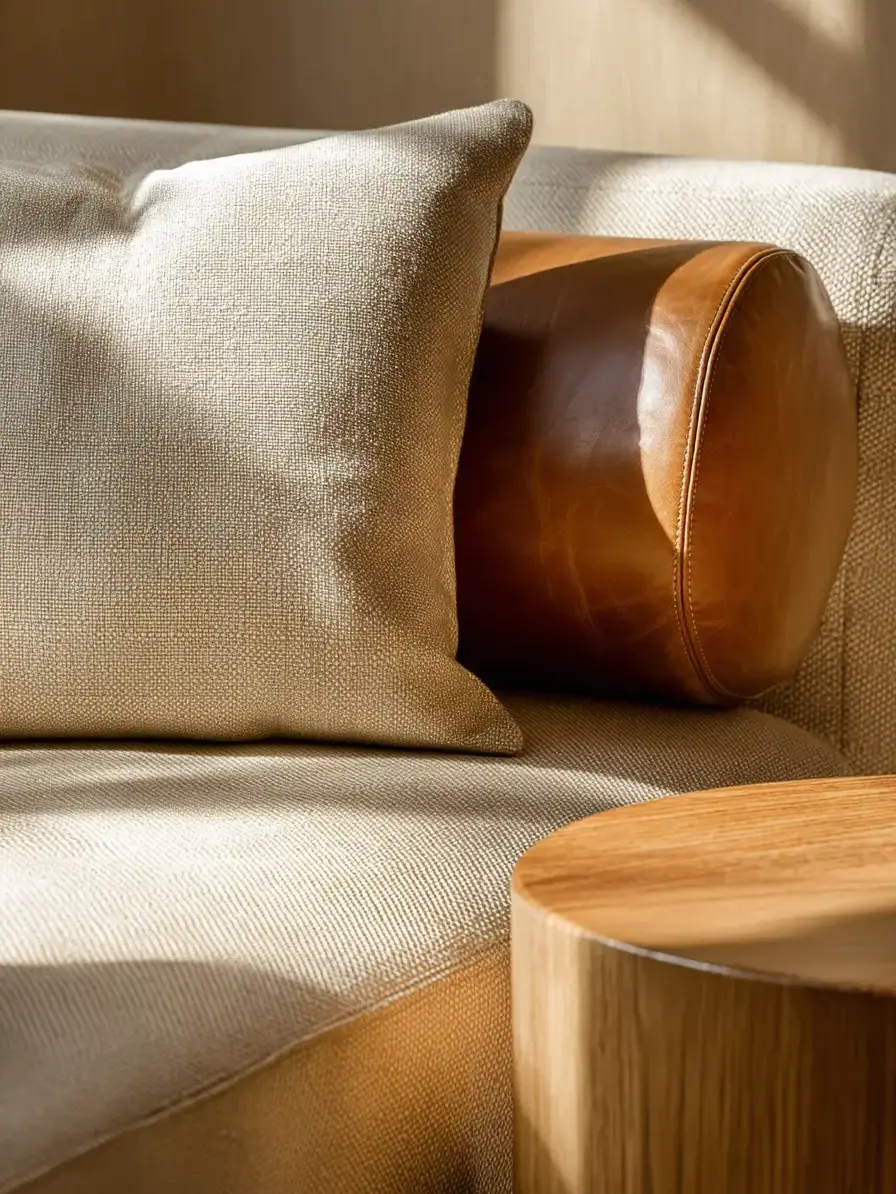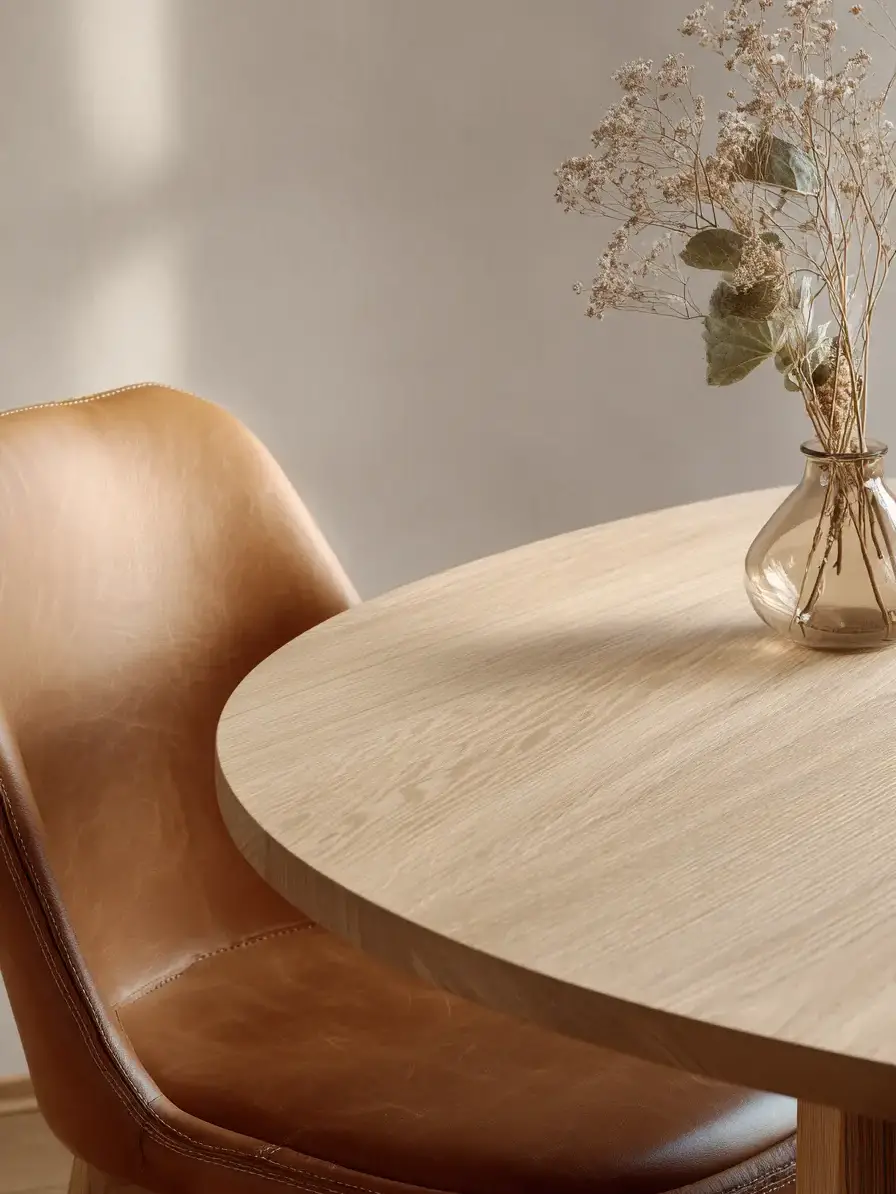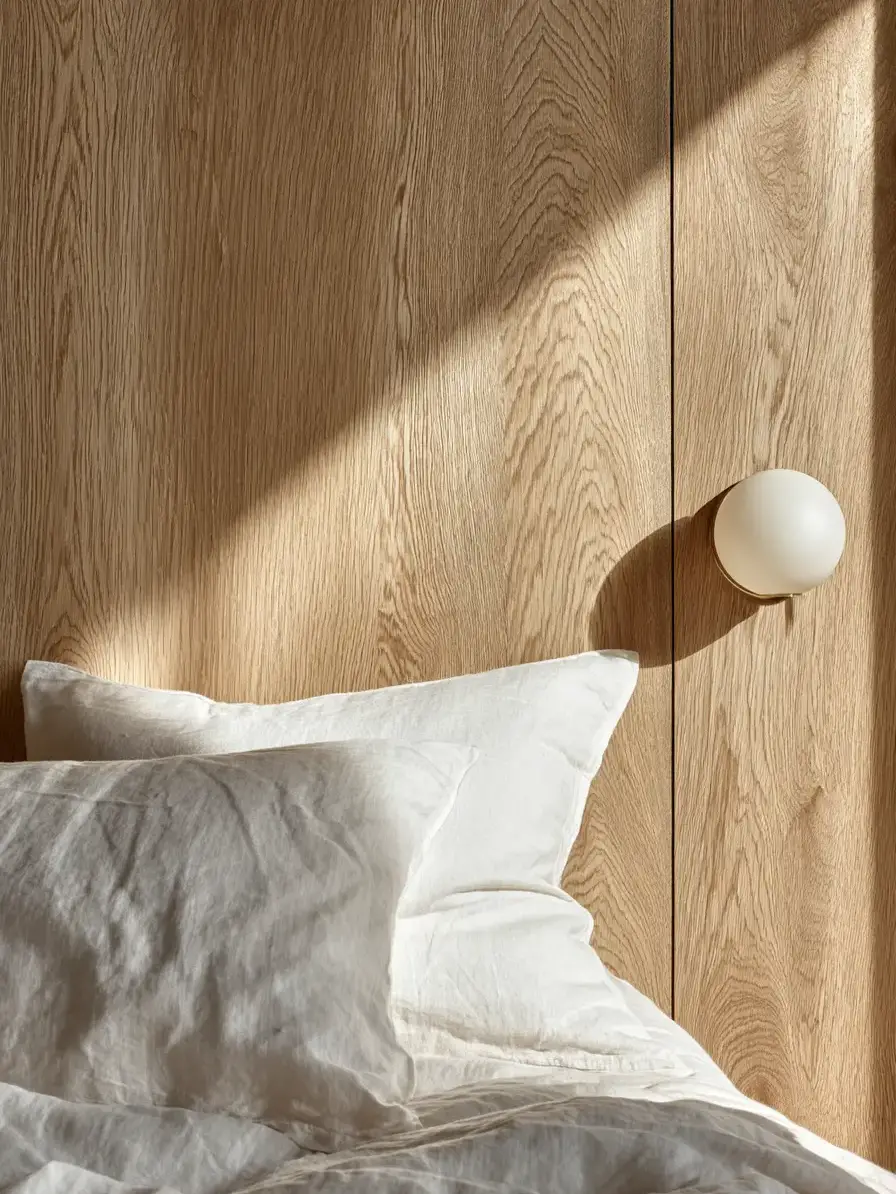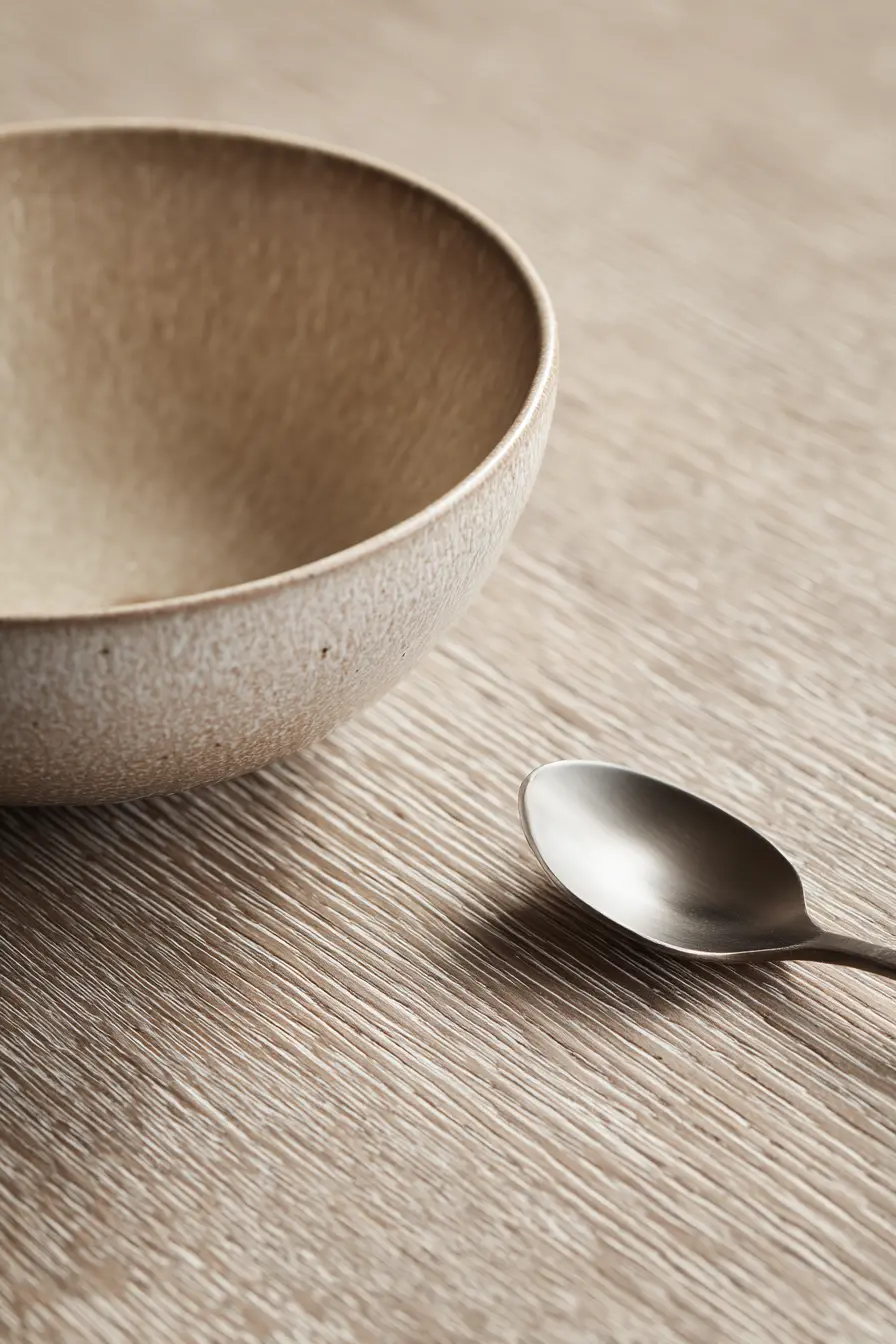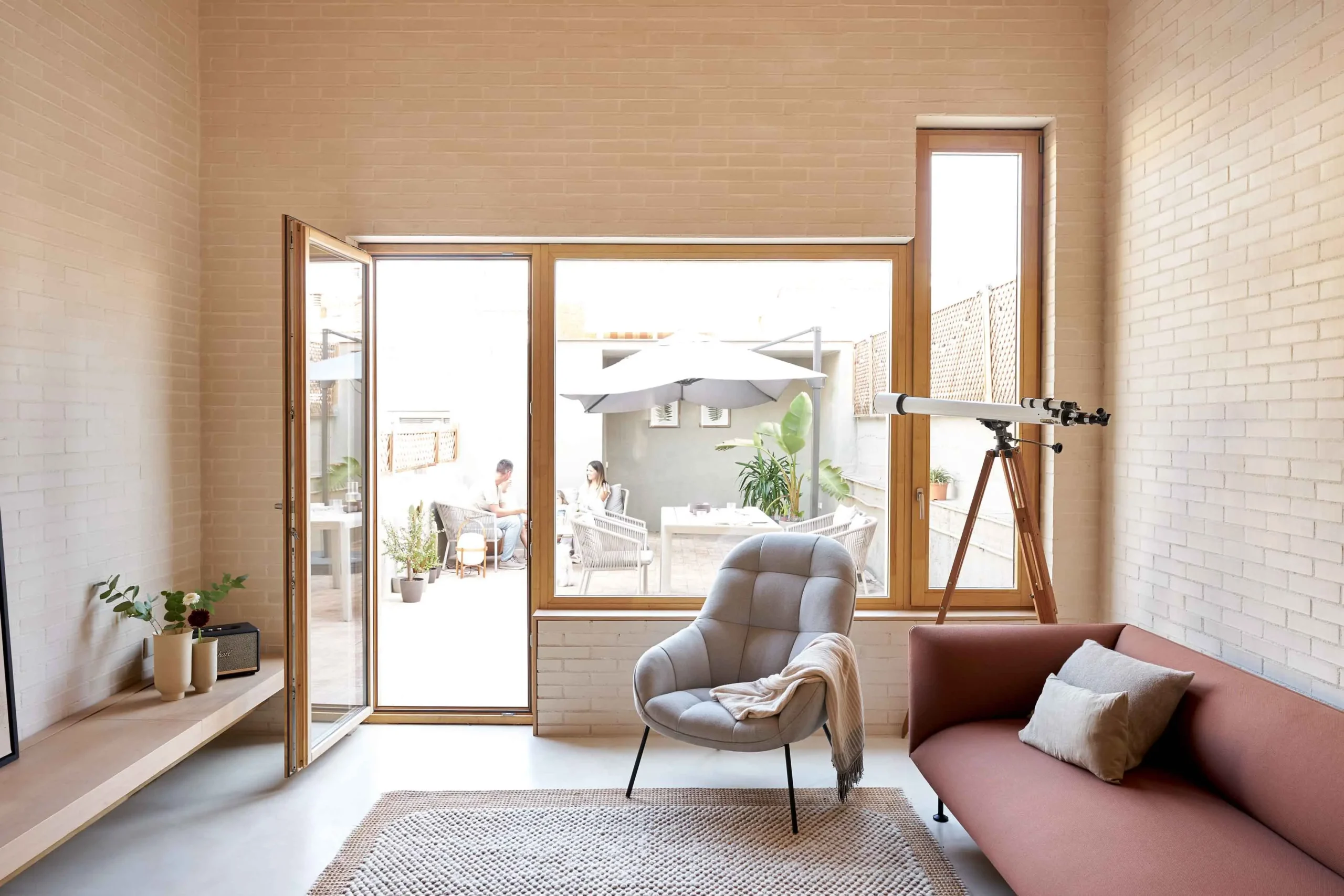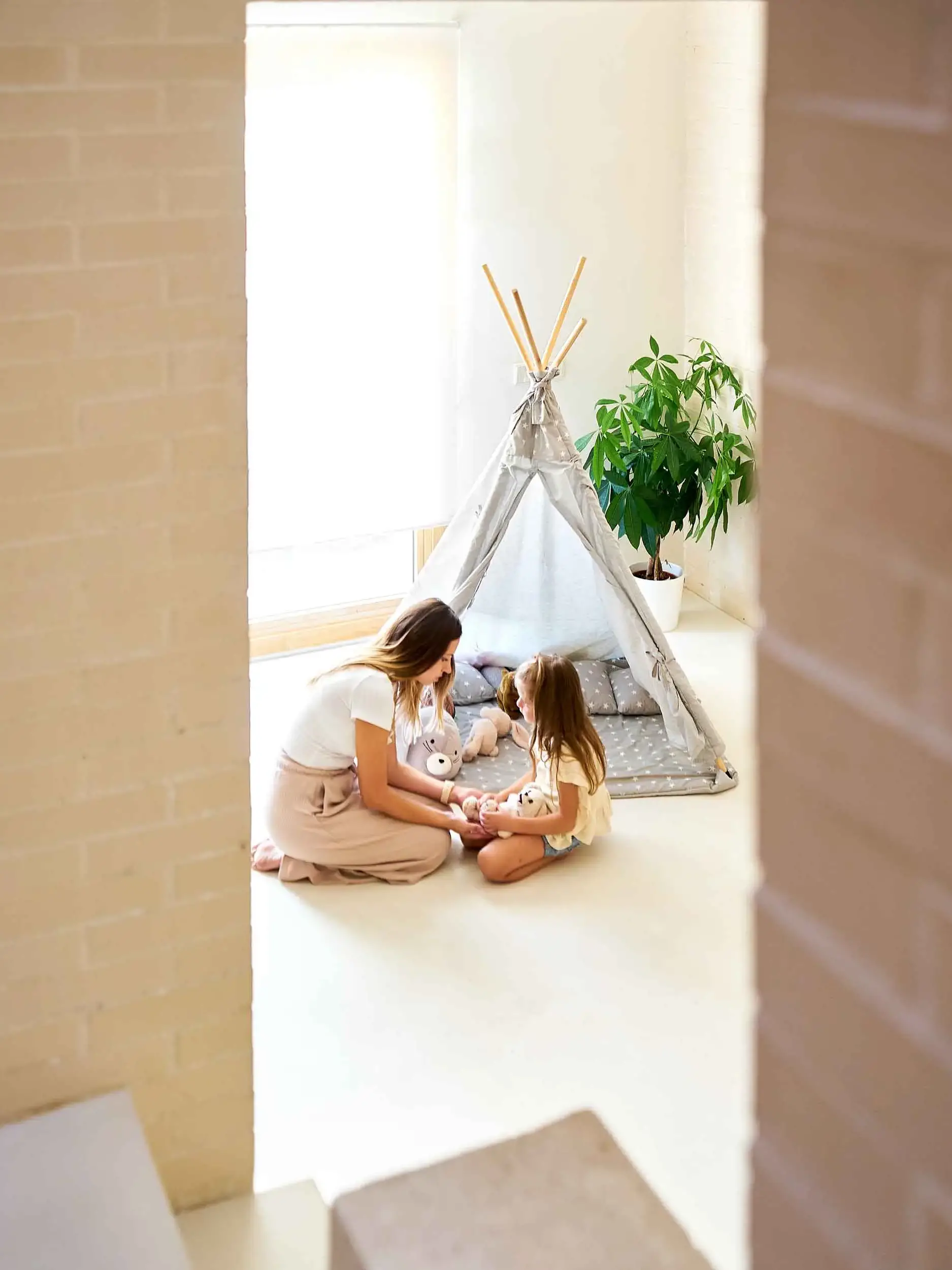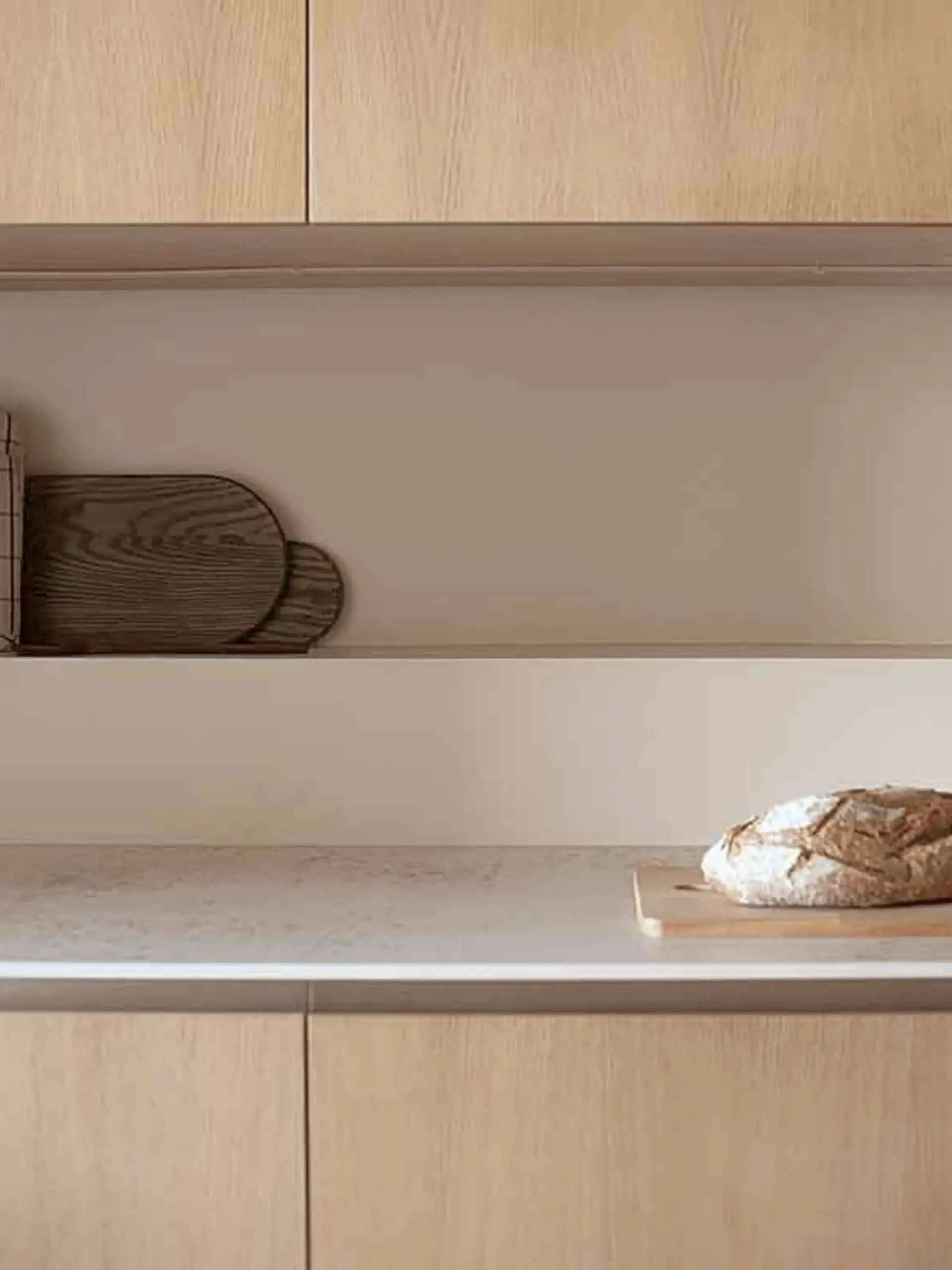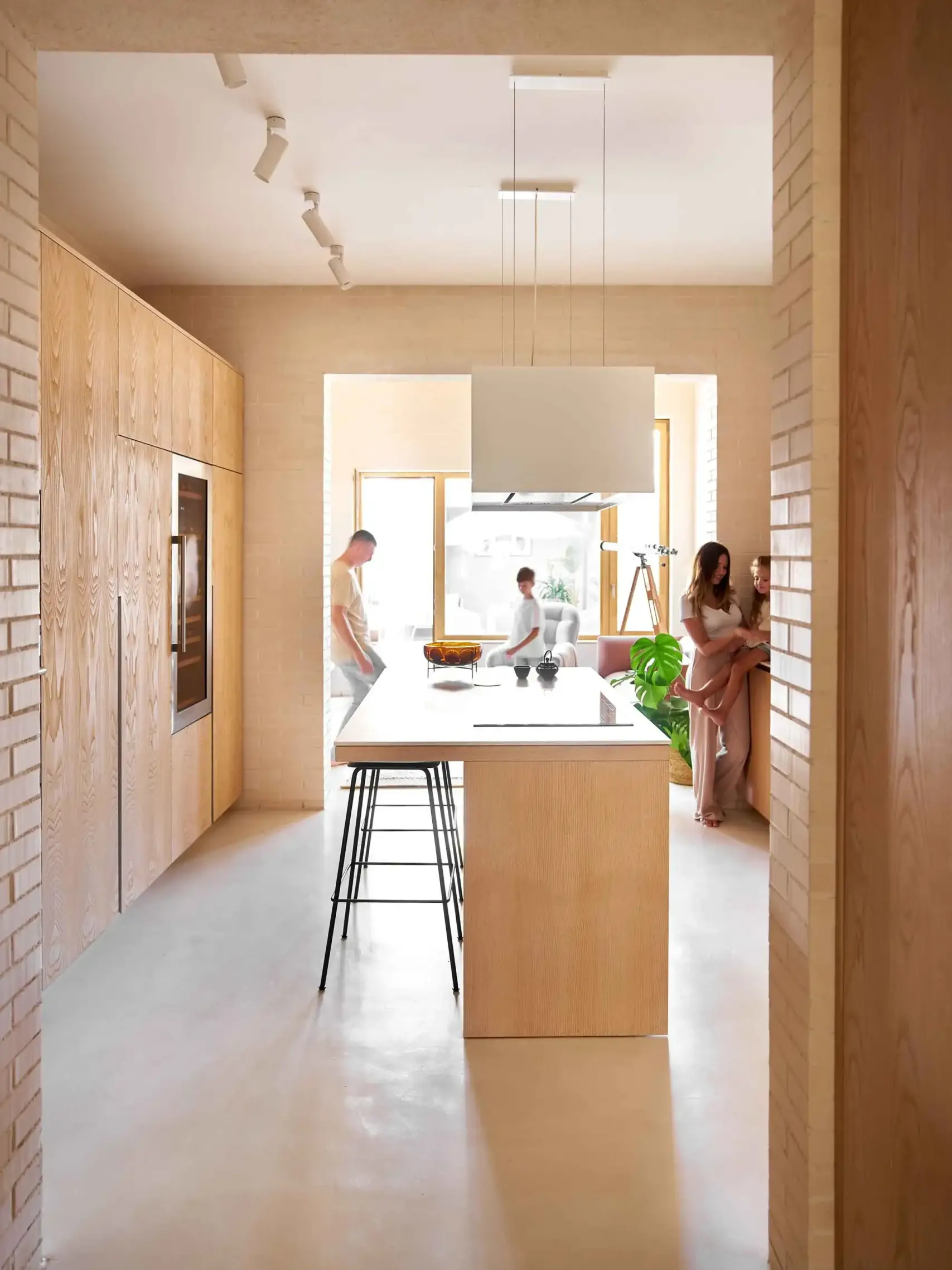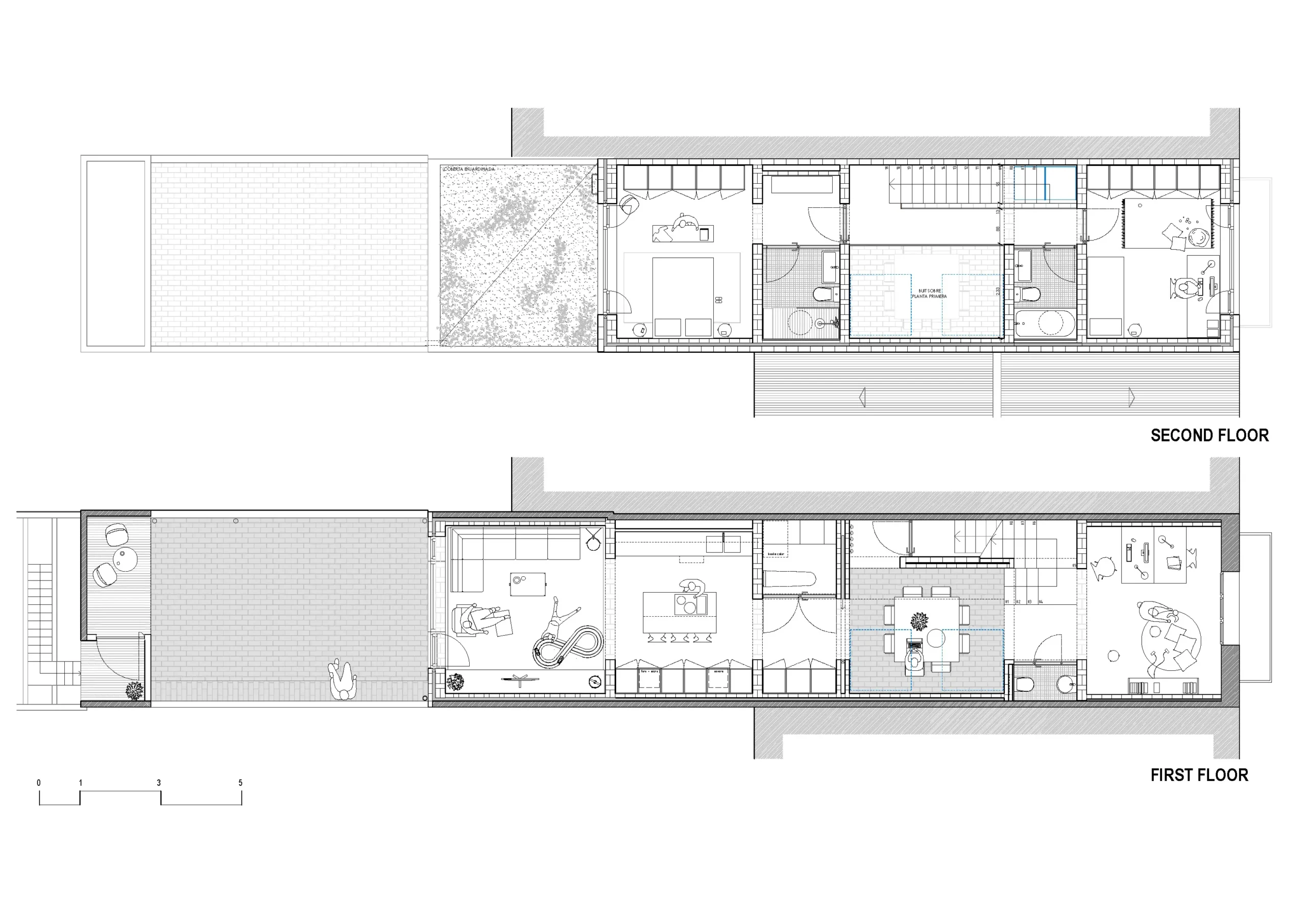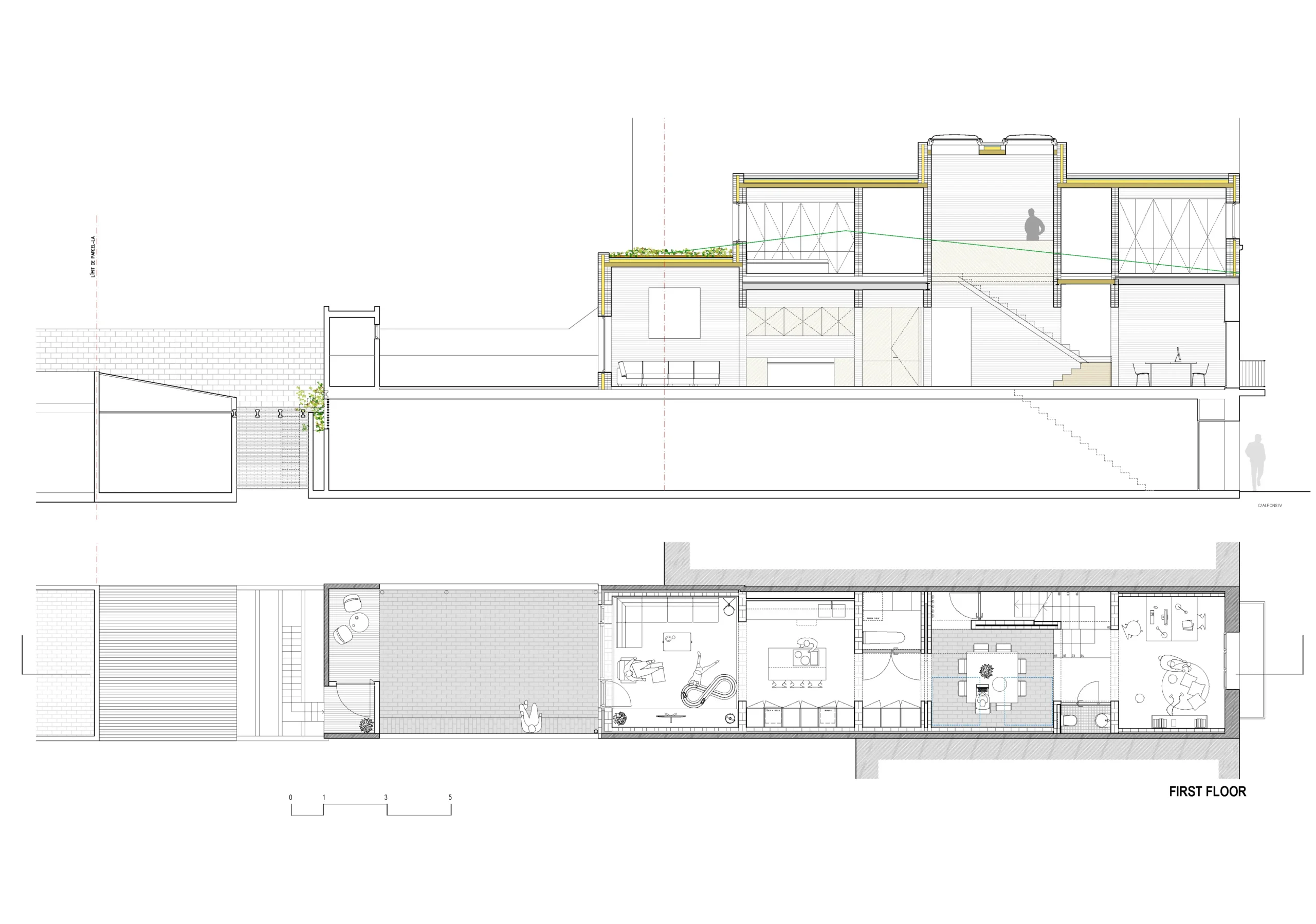Location
Granollers, Barcelona
Category
Residential
Photography
Grey Matter, FEM
Year
2021
In the dense fabric of Granollers, a historic town in Catalonia, life unfolds between narrow parcels and the lively rhythm of its main street. It is here, above a ground-floor shop that remains active throughout the entire process, that a new home has been carefully shaped. Rather than building anew, the project engages in a quiet dialogue with the existing structure, transforming the first floor into a serene family dwelling.
The dual condition of the building—a bustling commerce below and a domestic refuge above—defined the strategy from the very beginning. Construction had to proceed without disturbing the daily operations of the shop, demanding both restraint and ingenuity. With a limited budget and complex logistical constraints, the approach became clear: strip the house down to its essence, rely on a minimal palette of materials, and allow light, air, and proportion to become the true architecture of the home.
Where light is controlled, shadows gain meaning. The house is designed not only to receive the sun, but to temper it—to stretch its presence throughout the day, to let walls hold its trace. In this play between clarity and shade, a deeper sense of calm is cultivated.
Ceramic was not an aesthetic decision—it was a structural and atmospheric one. Its porous surface absorbs light, softens contrast, and brings warmth to every room. When touched by the Mediterranean sun, each brick becomes a register of time, grounding the house in its climate and context.
The program is intentionally simple: a flowing day area that unites kitchen and dining room, a small flexible study, a bedroom for the parents and another for their daughter. In its modest scale, the house is not about accumulation but about distillation. Every decision was measured against the pursuit of calm, clarity, and essential living.
Two materials structure the entire project. First, the ceramic brick, left exposed, performs not only as structural support but also as a living surface—capable of regulating humidity, absorbing and reflecting the Mediterranean light, and bringing a warm, tactile presence in creamy tones. Its porous texture gives depth to daylight, softening its brightness and offering a material memory of earth and clay. Second, structural laminated wood panels define the ceilings, providing warmth overhead and establishing a continuous horizontal plane that contrasts with the weight of the brick. These two elements—mineral and vegetal, heavy and light—form the architecture’s vocabulary, while solid oak was chosen for carpentry and bespoke furniture, creating unity throughout.
More than aesthetics, these materials express a way of living. Their natural warmth and imperfection bring softness to the domestic space, dissolving the boundary between function and feeling. In this home, surfaces are not decoration—they are the quiet soul of the architecture.
Every piece of furniture, from the kitchen to the tall wardrobes, shelving, and window frames, was custom designed. Rather than inserting external elements, the furniture emerges as a natural extension of the architecture. Built-in and discreet, these elements reinforce the sense of coherence: the entire house speaks the same language, in hushed and harmonious tones.
The narrow and elongated parcel posed a fundamental challenge: how to bring daylight into the center of the dwelling, where facades could not reach. The answer looked back to history and Mediterranean tradition, to the Roman houses of Pompeii and the timeless typology of the patio. Here, reinterpreted for contemporary life, a central void was carved into the plan, not open but illuminated from above through two generous skylights in the roof.
This double-height space, today occupied by the dining table, becomes the heart of the home. It is the place where daily life gathers: where meals are shared, conversations unfold, and games are played. But beyond function, it is an atmospheric core. Light descends vertically, changing in intensity and tone as the hours pass. Morning light grazes softly, midday sun floods the room with vibrancy, while evening brings golden reflections across the textured brick walls. The house becomes a sundial, registering the passage of time and the rhythm of the seasons.
In summer, the void operates as a natural chimney. Hot air rises and escapes through the skylights, ensuring continuous ventilation without mechanical assistance. Like the courtyards of ancient Rome, it is both poetic and pragmatic: a space of beauty that also sustains comfort and wellbeing.
This central space is not a corridor, but a pause. A place of openness and connection. It holds the house together—drawing in light from above, extending views across the plan, and offering a moment of stillness between rooms. Architecture here does not divide; it invites continuity.
By eliminating superfluous layers, the architecture returns to its essence. Brick, left exposed, becomes both structure and surface—tactile, grounding, and serene. Warmth arises not from ornament, but from the quiet presence of materials that carry weight, memory, and meaning.
The spatial sequence of the home is defined by diaphragms of exposed brick. Their thickness and tactility articulate the plan, creating visual continuities from one façade to the other. Nothing interrupts the flow: the study connects seamlessly to the dining room, the kitchen opens into the living area, the bedrooms extend beyond without severing the dialogue with the central light. The house unfolds as a series of interconnected planes, tied together by the luminous void at its heart.
The atmosphere is one of serenity and Mediterranean clarity. By working with so few materials, the design cultivates a sense of wholeness—every surface, every junction, every piece of joinery resonates with the same language. Oak carpentry introduces subtle warmth, its grain harmonizing with the creamy brick and pale wooden ceilings. Light itself becomes the third material, animating the surfaces, softening their austerity, and reminding the inhabitants that architecture is never static but always alive.
“We looked back to the memory of Mediterranean courtyards to design a house that breathes, illuminates, and calms.
- POL FEMENIAS (ARCHITECT)
Living here is to inhabit a continuum. The dining table at the center is not only a functional piece but a symbolic anchor: a stage for everyday rituals, a place of gathering, a silent witness to the changing sky above. From this heart, life radiates outward to the private rooms, and inevitably returns again, drawn back by the presence of light.
The project demonstrates that richness does not depend on quantity but on depth. By reducing the palette to two essential materials and by concentrating the design around the choreography of light and air, the house achieves a timeless simplicity. In a dense urban environment, where noise and pressure abound, it offers a refuge of calm—a place where time slows, and the senses can rest.
Ultimately, the house in Granollers is more than a renovation. It is a reflection on what is essential in contemporary living. It is a reminder that architecture does not always need to impose or declare, but can quietly support life with humility and grace. It teaches that the luxury of today lies not in excess, but in serenity; not in accumulation, but in subtraction.
“Building with the essential”—that could be the guiding motto of this work. Here, brick, wood, light, and air are enough. Together they create a home where architecture withdraws, so that life itself can take the foreground.
The tactile grain of the oak surface, paired with the soft ceramic glaze and the muted sheen of steel, embodies the serene material palette of the house. Every detail is conceived not as decoration, but as an expression of calm continuity, where everyday objects become part of the architecture.
